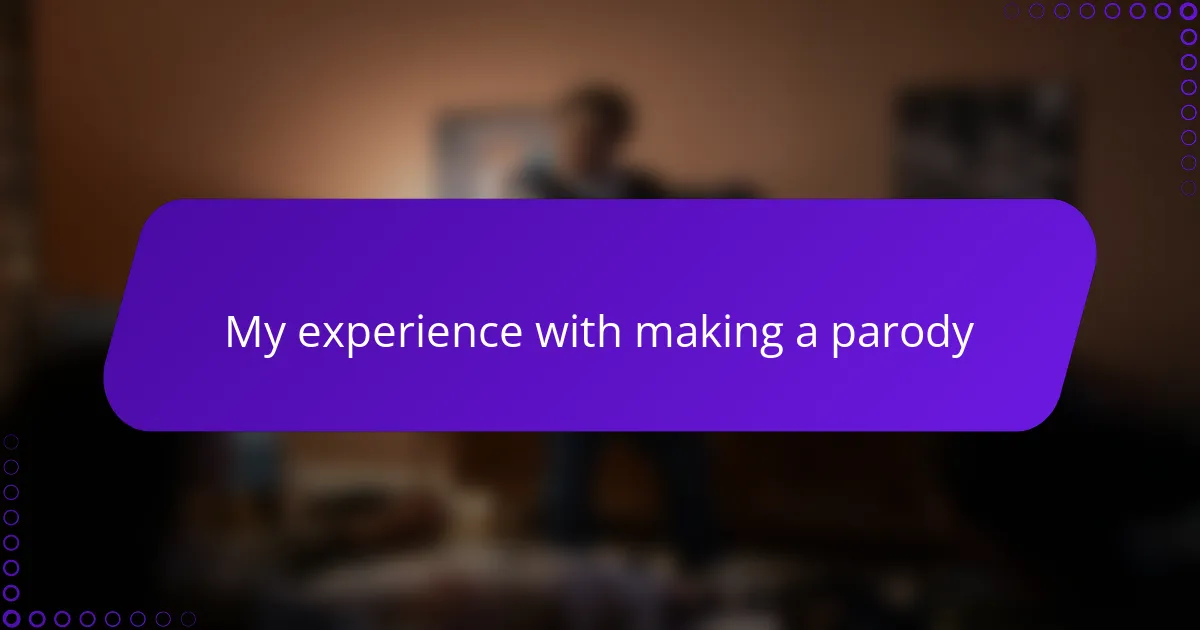Key takeaways
- Parody videos require a blend of cleverness, timing, and exaggeration to create humor, making them a unique form of expression.
- Familiarity with the original content is crucial, as it allows creators to highlight and exaggerate key traits effectively.
- Planning is essential for successful parody projects, including selecting familiar targets, brainstorming ideas, and organizing the production process.
- Engaging with niche communities and collaborating can significantly increase the visibility and appreciation of parody videos.
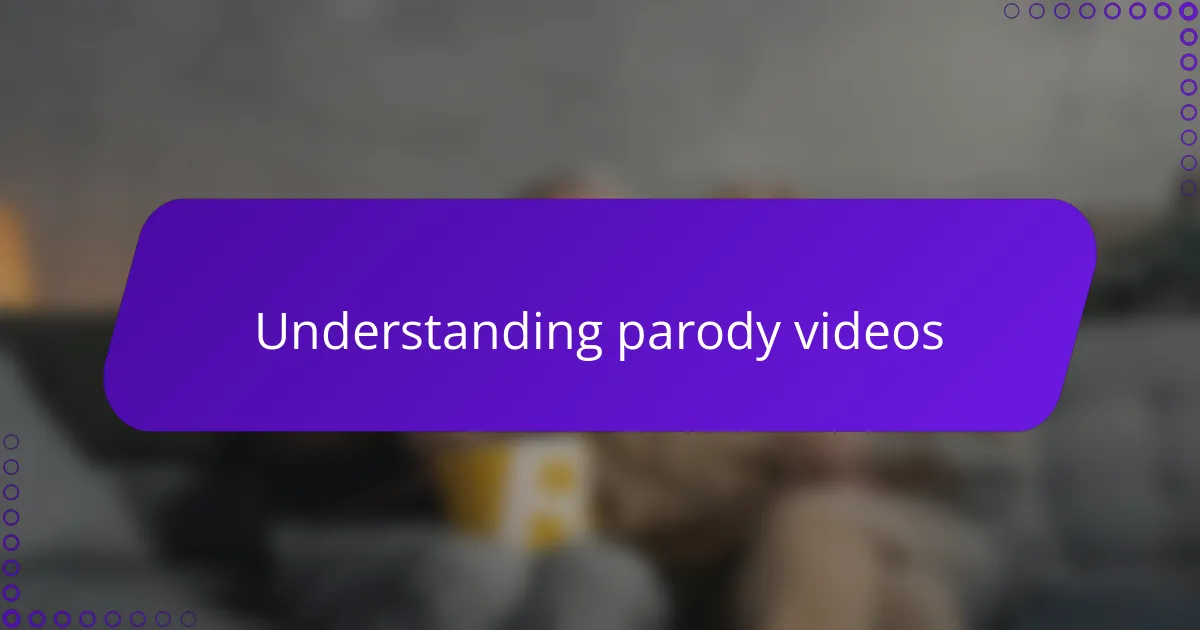
Understanding parody videos
Parody videos are all about taking something familiar and twisting it just enough to make us laugh. When I first tried making one, I realized it’s not just copying—it’s about highlighting the quirks and exaggerating certain traits to create humor.
Have you ever noticed how a subtle change in tone or expression can completely flip the meaning of a scene? That’s the magic of parody. It’s this blend of cleverness and playfulness that got me hooked on creating my own.
What makes parody videos stand out, in my experience, is their ability to connect with viewers who already know the original. It’s like sharing an inside joke with a friend, making the humor feel personal and, honestly, even more satisfying.
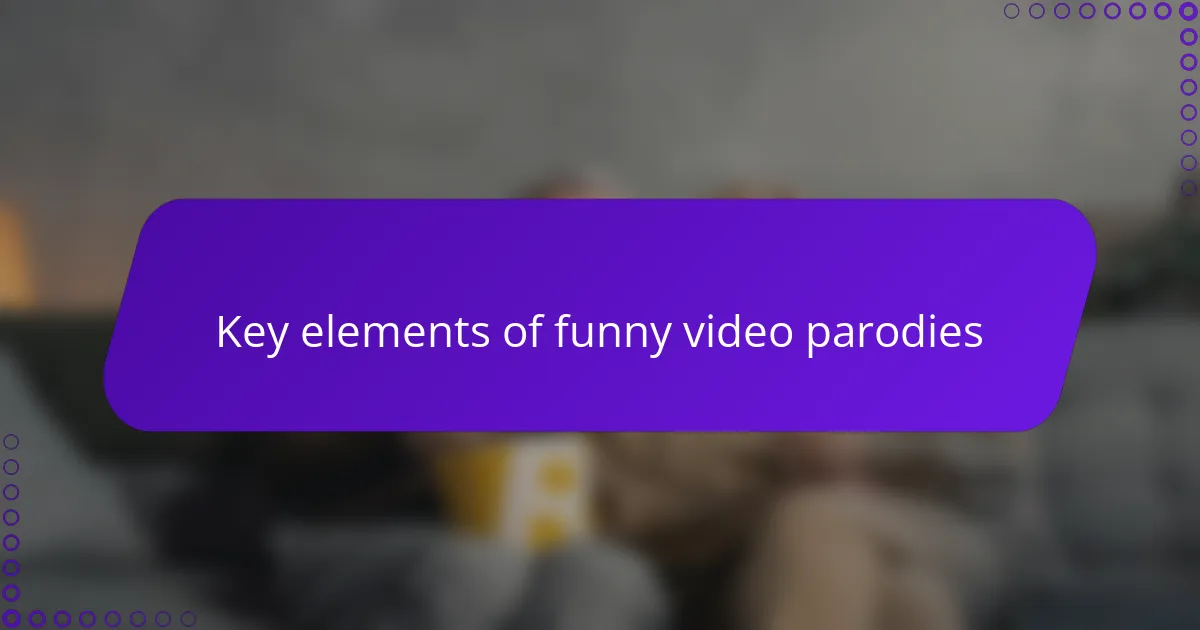
Key elements of funny video parodies
One thing I quickly learned is that timing is everything in a funny video parody. If your punchline or exaggerated moment drags on too long, the humor can fall flat, but nail the timing, and it hits just right—like a well-placed joke in a conversation that makes everyone laugh out loud. Have you ever rewatched a scene to figure out exactly where to pause? I definitely have, more times than I can count.
Another key element is familiarity with the original content. When I was making my first parody, knowing every little detail helped me decide what to exaggerate. It’s like teasing a friend—you have to know what makes them tick, or else your joke misses the mark. This insider knowledge creates that satisfying feeling of “aha” when viewers recognize what’s being played with.
Finally, I think the best parodies don’t just imitate; they add personality. Bringing your own voice or perspective makes the parody feel fresh and genuine rather than just a copy. I always try to inject my own quirks or expressions, which has helped me develop a style that feels uniquely mine—and honestly, that’s been one of the most rewarding parts of the process.
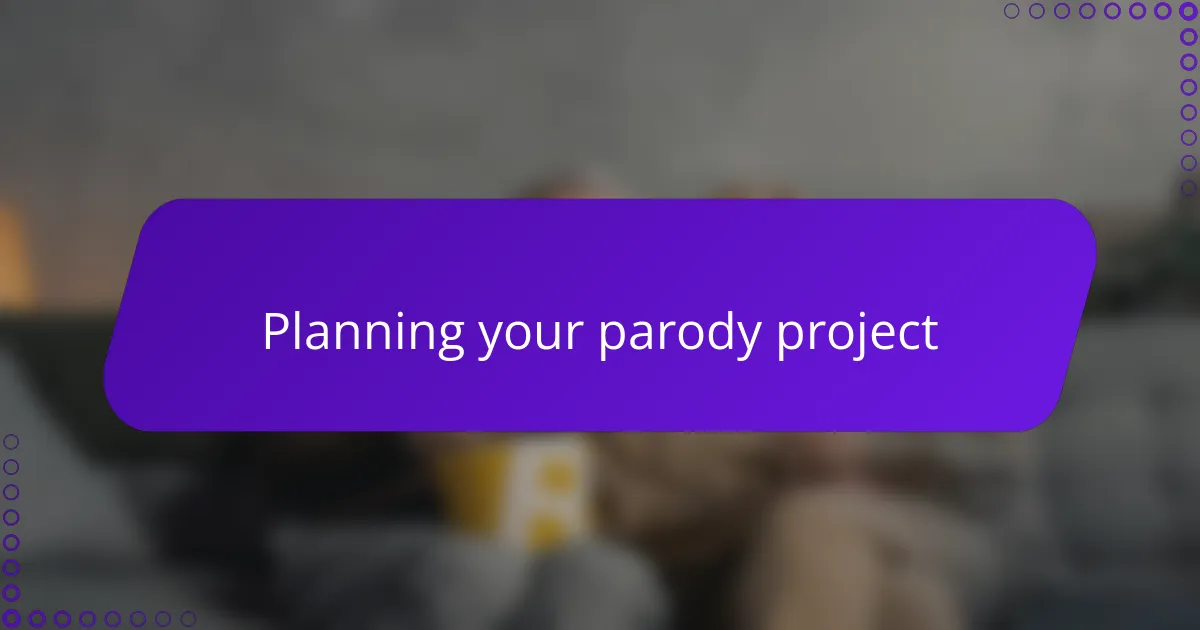
Planning your parody project
Planning a parody project always starts with choosing the right target. I’ve found that picking something I genuinely enjoy or know well makes the whole process way more fun—and it shows in the final video. Have you ever tried joking about something you barely understand? Yeah, it usually doesn’t land well.
Next comes brainstorming how to twist the original in a way that feels fresh. I often jot down quirky ideas or exaggerations that pop into my head, even the silly or ridiculous ones. Sometimes the best laughs come from the most unexpected angles, so I try not to censor myself too early.
Scheduling is another surprise challenge I didn’t expect at first. Balancing between filming, editing, and getting feedback requires a bit of organization. I used to just dive in headfirst, but now I set mini-deadlines—it keeps the momentum going without feeling overwhelmed. Have you ever been stuck halfway and lost steam? That’s where a good plan really saves you.
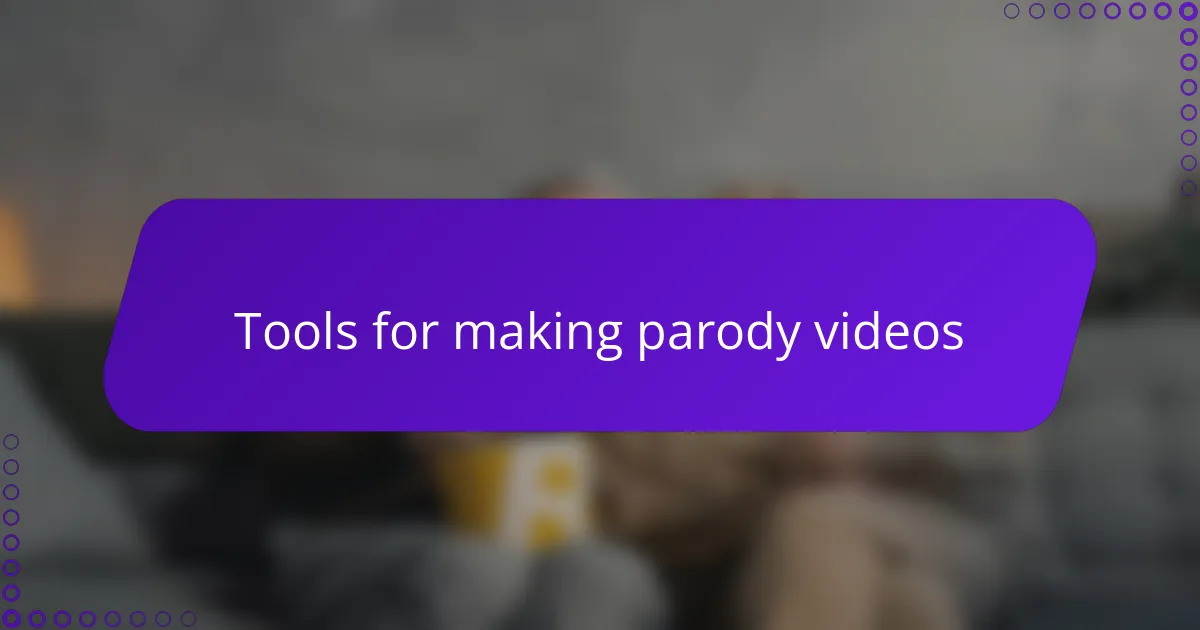
Tools for making parody videos
When I first started making parody videos, I quickly realized that having the right tools was a game changer. Basic editing software like iMovie or Windows Movie Maker was my go-to at the beginning—they’re user-friendly and perfect for cutting clips and adding simple effects without feeling overwhelmed. Have you ever opened a fancy editing program and felt completely lost? That was me, so keeping it simple helped me focus on the humor rather than the tech.
As I got more serious, I dabbled with programs like Adobe Premiere Pro and Final Cut Pro. These gave me way more control, from layering sound effects to fine-tuning colors. At one point, I spent hours tweaking a scene just to get the timing of a silly sound effect perfect. It felt tedious, but that precision made the parody pop in a way I hadn’t expected. It’s a bit like adding seasoning to a recipe—you don’t want too much, or it overwhelms, but the right pinch makes all the difference.
Of course, no parody video is complete without some basic props or screen recording tools. For instance, I often used my phone’s camera paired with clips recorded straight from YouTube using screen capture software. Combining these with simple apps helped me blend original footage and my own funny takes seamlessly. Have you ever thought about how a quick smartphone clip can make your parody feel more personal and relatable? Trust me, those little touches bring your ideas to life in a way polished tech alone can’t achieve.
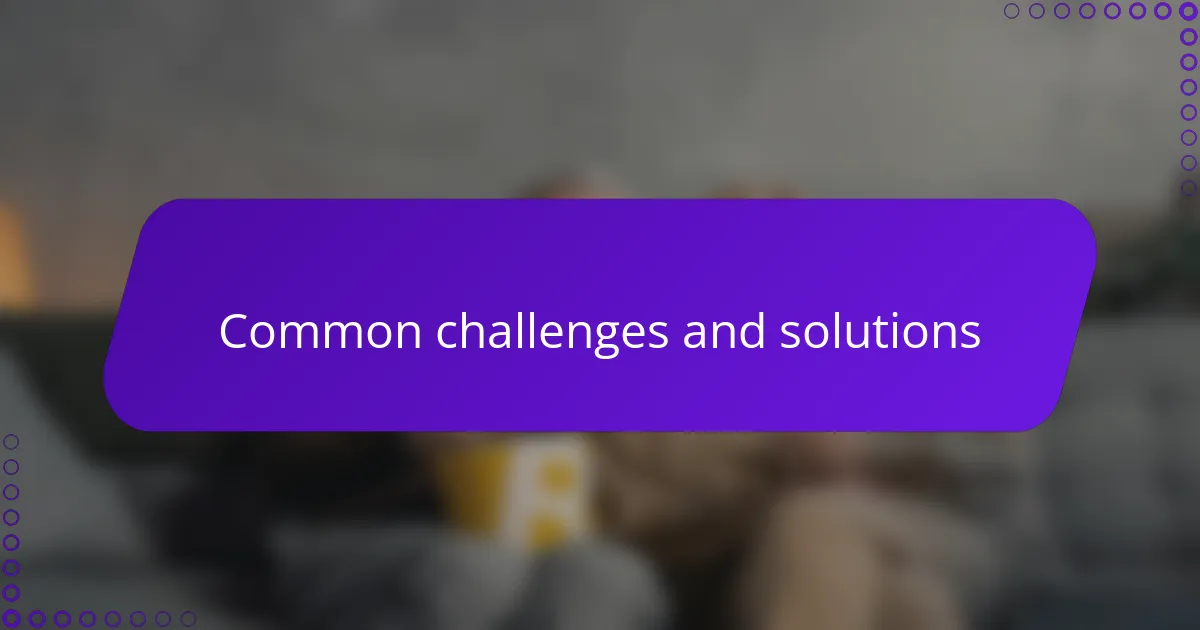
Common challenges and solutions
One challenge I faced early on was striking the right balance between being funny and respectful. Sometimes, it’s tricky to exaggerate quirks without crossing into mean-spirited territory. I found that keeping the tone light and playful—almost like teasing a good friend—helped me avoid rubbing people the wrong way.
Another big hurdle was nailing the pacing. I can’t tell you how many times I re-edited clips because the joke either dragged too long or felt rushed. It’s frustrating when a funny moment dies because the timing is off. What really helped was stepping back after editing, letting the video sit for a day, and then watching it with fresh eyes—it’s amazing what you catch after some distance.
Technical stuff was a constant curveball, especially when I first tried syncing sound effects or matching the original video’s look. I remember spending hours just getting a comedic voiceover to line up perfectly with the actor’s lips. Patience and breaking the process into small steps made those moments manageable. If you’re struggling too, breaking down big tasks can turn the impossible into doable.
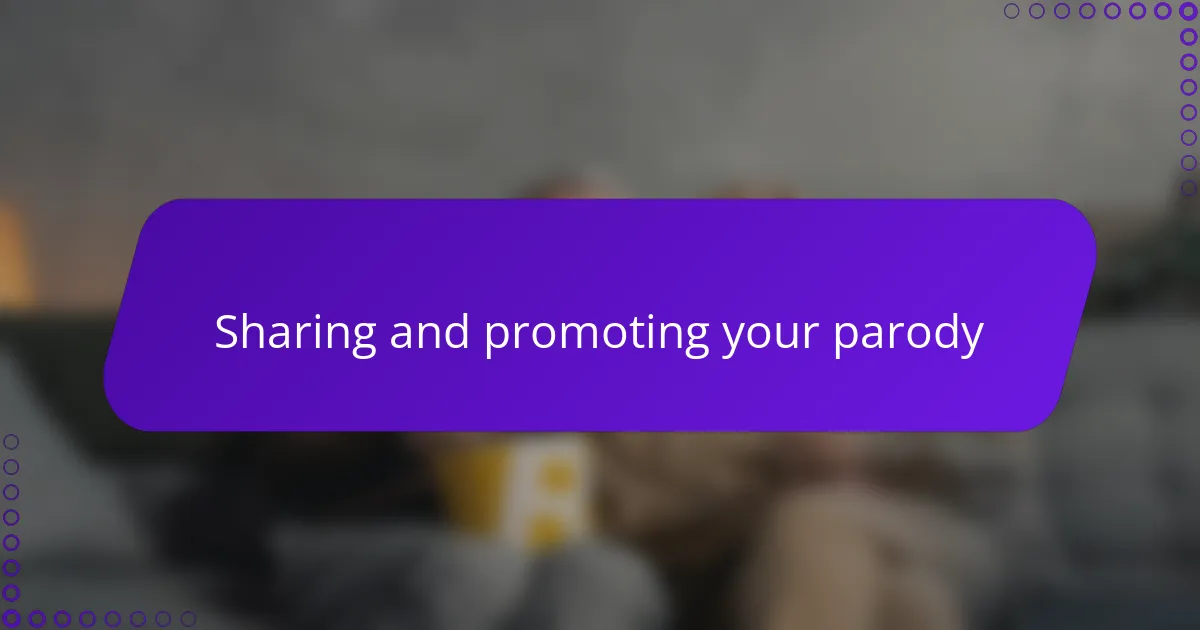
Sharing and promoting your parody
Sharing your parody felt just as important as making it. I remember nervously posting my first video on social media, wondering if anyone would get the joke or appreciate the work behind it. Have you ever hit “upload” and instantly questioned if it was good enough? That mix of excitement and anxiety is part of the journey.
Promoting your parody requires more than just sharing a link. I found engaging with niche communities—like fan groups or forums of the original content—was a game changer. People there are already passionate and love clever twists, so dropping your video in those spaces felt like sharing it with friends who truly ‘get it’.
Sometimes, collaborating with others to boost visibility helped too. A friend shared my parody on their page, and suddenly views spiked overnight. It taught me that promotion isn’t just about shouting into the void; it’s about making genuine connections. Have you tried asking friends or fellow creators to support your work? It can turn a small video into something much bigger than you imagined.
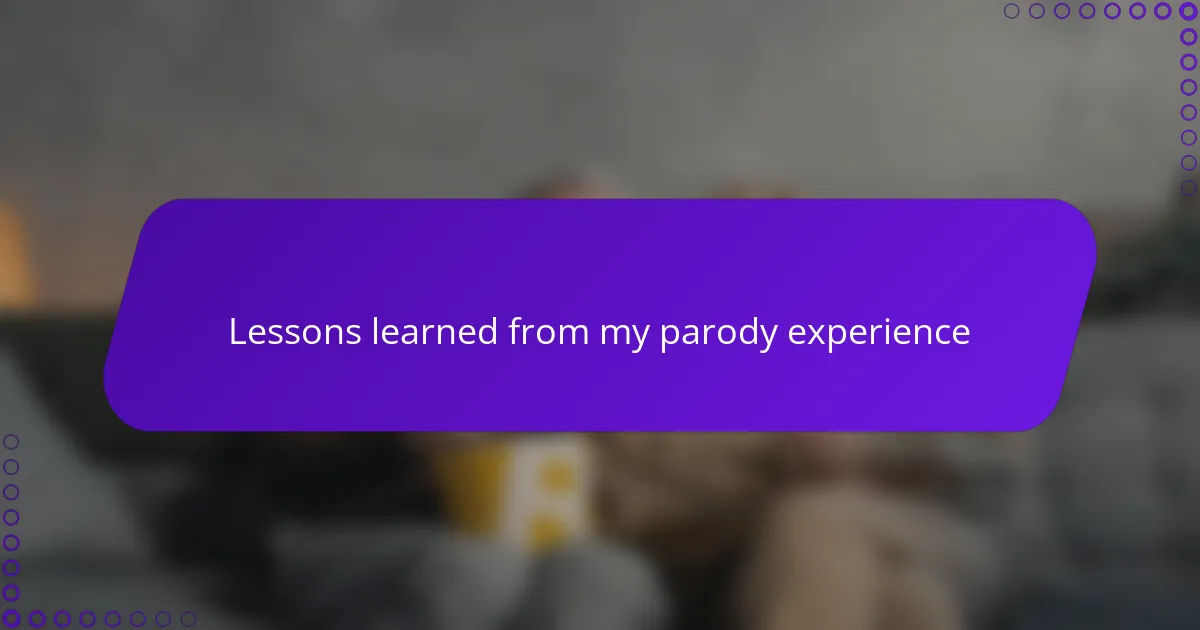
Lessons learned from my parody experience
One lesson that really stuck with me is how patience plays a huge role in parody-making. Have you ever rushed through something only to realize later you missed that perfect comedic beat? I learned the hard way that stepping back, rewatching, and tweaking—even when it feels tedious—can transform a decent parody into something memorable.
I also discovered that staying true to your own sense of humor matters more than trying to guess what everyone else will find funny. Initially, I was tempted to mimic popular styles, but it felt hollow. When I finally embraced my quirky voice, the process became more natural and, surprisingly, the reactions nailed a genuine connection.
Lastly, handling feedback is tougher than I expected. After posting my first parody, I braced for criticism but found that constructive comments actually sharpened my skills. Have you ever felt defensive about creative work? Opening up to feedback, even when it stings a little, can be one of the best ways to level up your content.
